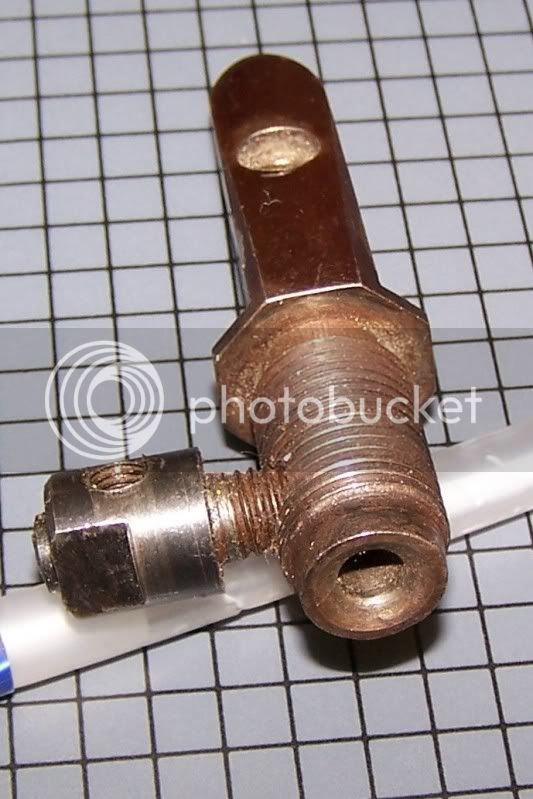The breach plug should NOT be removed , and nis not meant to be removed. It is "cross pinned" by a threaded insert that the touch hole liner screws into. In theory you could drill out or otherwise extract the insert then remove the plug , but would be near impossible to line the plug perfectly with threaded hole up . Make sense ?
Here is another image of the patent breach, from a cap lock but same idea.
See how the drum threads through the barrel into the breach plug and acts as a cross pin . See the channel/hole ? This one appears to be around 1/4" (.250") , on this one, which I believe is from a Pedersoli. Most Traditions and CVA's have a much smaller hole.
Disclaimer: for information purposes only.
Here is an extreme option I would only recommend to someone with machining skills. The channel (center hole) in the patent breach on a friends barrel measured .177" or 4.5mm , very small and easily fouled and making powder flow difficult causing misfires. Using a 3' section of 3/8" steel rod I center drilled the end using a lathe starting with a 3/16" (.187") drill and secured it (press fit) also adding two set screws on the drill flats. I used a brass muzzle guard on the rod to center the rod and with a lot of cutting fluid and low speed carefully drilled the hole out to .187" .This is very hard steel a
quality colbalt drill is needed. Then repeated the process going up in size .015" at a time stopping at 15/64" (.234"). This increased the diameter by .057" , not a lot but enough to allow better powder flow and less clogging from fouling and not enough to affect the wall thickness of the plug as to weaken the threads. We tested after this size and the issues all but went away so we left it at that. Again this is an extreme option left to an experienced machinist. You screw up and snap a drill and you're done, barrel is scrap metal.
I believe with the advice you've got from proper cleaning, vent picking, and loading that 95% of your problems should go away. This would be my advice as well.








